Colombia Introspective
-

-
The massive South American country, home to a collection of coffee-producing regions, beautiful landscapes, the Magdalena River, Andes Mountains, rich jungles, and bustling cities; is truly a deity amongst coffee countries. Colombia, with its past political struggles, remains strong, continuing to produce exceptional coffee, since it was introduced back in the 19th century. Join me as I venture to the capital and explore Huila and Cauca to learn more.
-

-
Flying into Bogotá is quite a shock – the Colombian capital is massive, spanning across a large stretch of land, hugging the mountains that tower over the city. My journey through Colombia began here, and it was an excellent place to start in order to give me a different perspective of the well-known coffee-producing country.
My trip was carefully planned thanks to the Cóndor team in Colombia. Cóndor is the specialty arm of the ECOM branch in Colombia. I met with the group, representatives of different ECOM organizations from Australia, South Korea, the UK, and Honduras. Such a grand mix of people to explore some of the producing regions within Colombia. And there are quite a number in this massive country including Huila, Cauca, Antioquia, Tolima, Nariño, amongst many others.
-

-
The entourage headed to the airport after a tasting of coffee from the many regions of Colombia. We boarded a plane for Pitalito, an important hub for the Huila, the leading coffee-producing region in Colombia. As soon as we arrive, the air is warmer and moist compared to Bogota. We soon jump in cars and arrive at the new wet mill being constructed by ECOM, which will be the largest in Colombia once it begins production.
It was truly massive and extremely well-planned. We were guided around the facilities, shown each careful step, the intricate machinery, and the efficiency of the mill. The mill has the capacity to process 180 tons of cherry per day, which equates to 30,000 bags of dried parchment each day. In total, from start to finish, it takes coffee 50 hours to be pulped, washed, and dried – exceptional. Additionally, the facilities use much less water than normal mills, increasing the efficiency and reducing environmental impact. Mechanical dryers were installed, with smoke staff cleaners to ensure pollution is reduced. Overall, it was quite complex, but innovative and sustainable. I was shocked to see how perfected the whole process was, and am eager to see the impact this mill will have on the region.
-

-
After touring the facilities, we met with producers from the Cóndor’s Club San Agustin, learning about the organization’s supportive measures given to the 50 producers who are members of the group. This support includes agronomic advice, social resources, and assistance with financial planning. Kits are also available for producers to learn more about quality – which includes a roaster, tools to examine green beans, and cupping materials.
In just this first evening, I realize just how complex Colombia is, so many intricacies and supportive measures to ensure producers receive the necessary support.
-
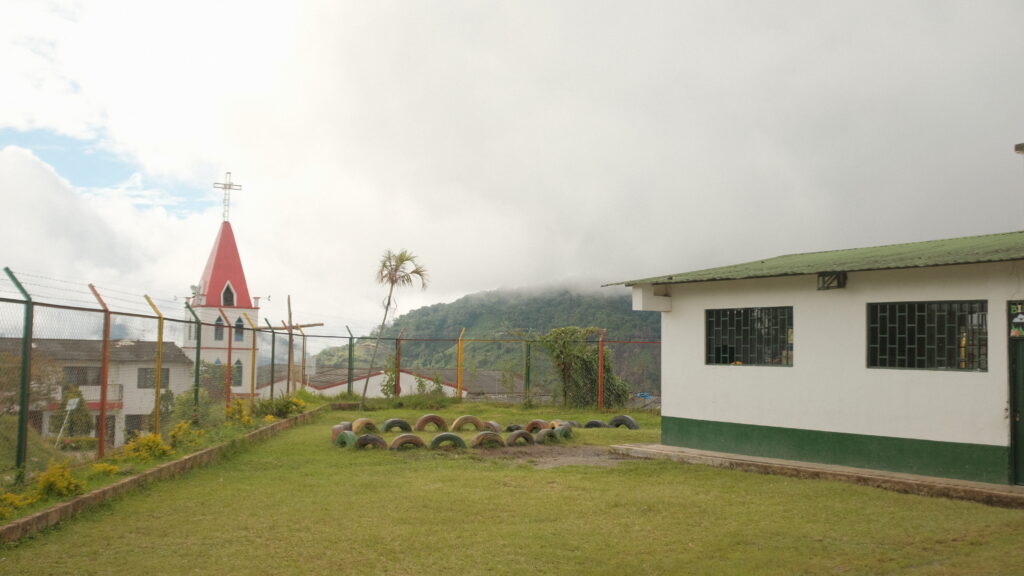
-
The following day, we headed to Alto del Obispo to visit a school that received supportive funding from Cóndor and ECOM, recently constructing a new biology classroom, financed with one of their Japanese partners. The skies were grey, the mountains bright green, lush, filled with life. As we tour the school, students approach us, say hello, intrigued by our many nationalities. We visit one classroom, where they request to see some Korean writing on the board by our South Korean colleague. It was such a warming moment, seeing these students so excited and eager to learn.
-
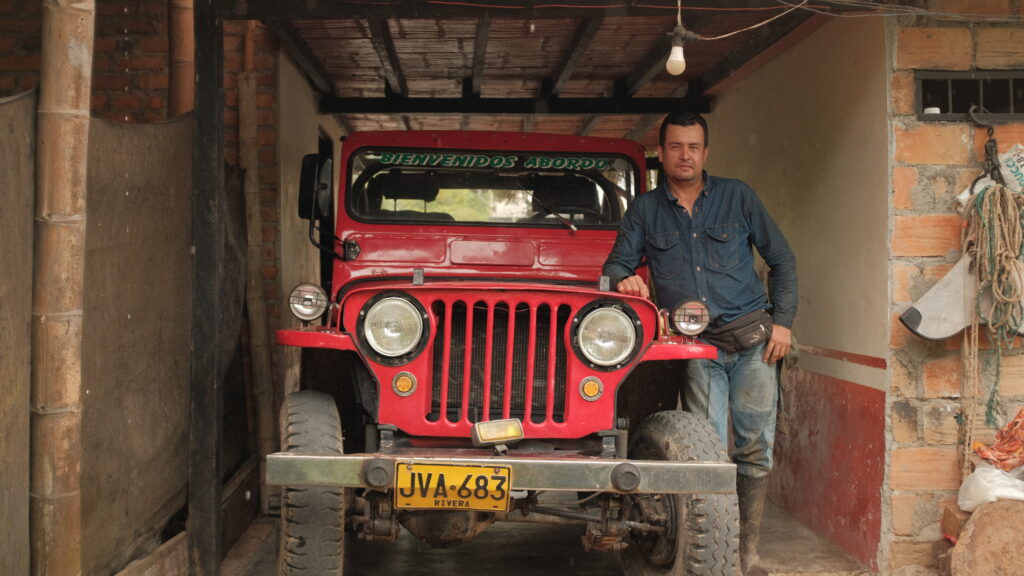
-
After the heartfelt school visit, rain was upon us, so we ventured to Huila, meeting with a producer named Enrique Medína. He welcomed us onto his farm, roughly 5 hectares in size, that he inherited from his father in 1986. He shows us his wet mill as we sip coffee, hiding from the rain. He built the wet mill himself, and it takes quite a significant amount of energy to process the coffee and carry it to his roof to dry. The new mill in Pitalito will remove this step for producers like Enrique, and he says he will be relieved to save time and not process his own coffee. His son, Jose Luis, joins us, and they show us around the farm, including some of his cacao trees.
-
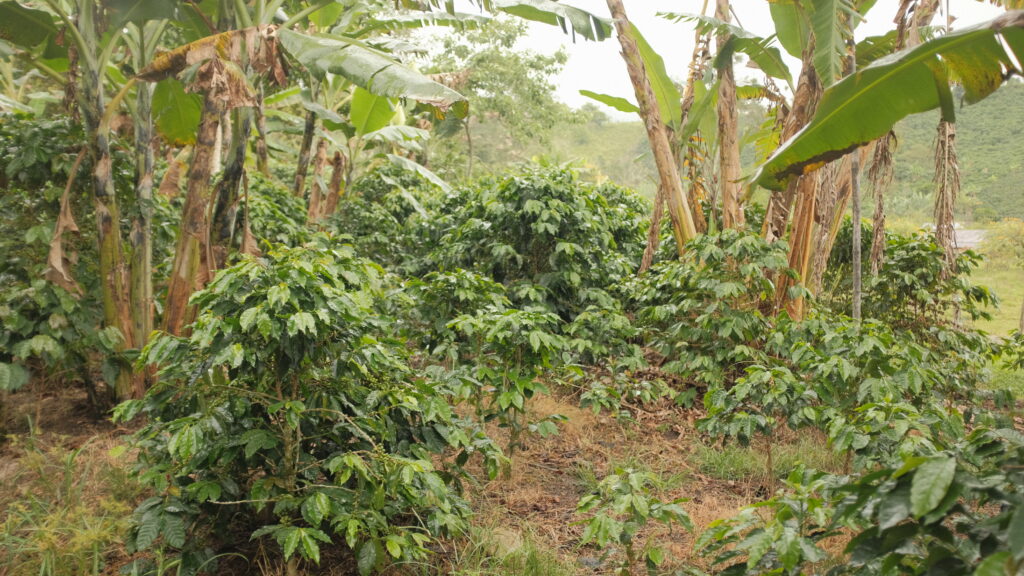
-
Such a wonderful visit, so the crew were quite excited to see another farm, thus we headed to meet Alirio Aguilera, to see his Finca Sauls. A vocal dog greets us, and Alirio kindly welcomes us into his home, where we learn more about the history of his family and coffee. His grandparents and parents grew coffee, and he inherited the farm roughly 36 years ago, growing Pink Bourbon, Caturra and Pacamara. He began working the farm with only 3.5 hectares and bought up surrounding land to grow. We venture to his mill, where we see how he carefully processes his coffee, a recent harvest sits awaiting pulping. The machine is powered on, and we see coffee pulped, and funneled into tanks of water, where they will be washed before drying in guardiolas.
Producers vary in size in Huila, and the mill will help some of the smaller producers, allowing them to maximize their income and utilize their time in more efficient ways.
-
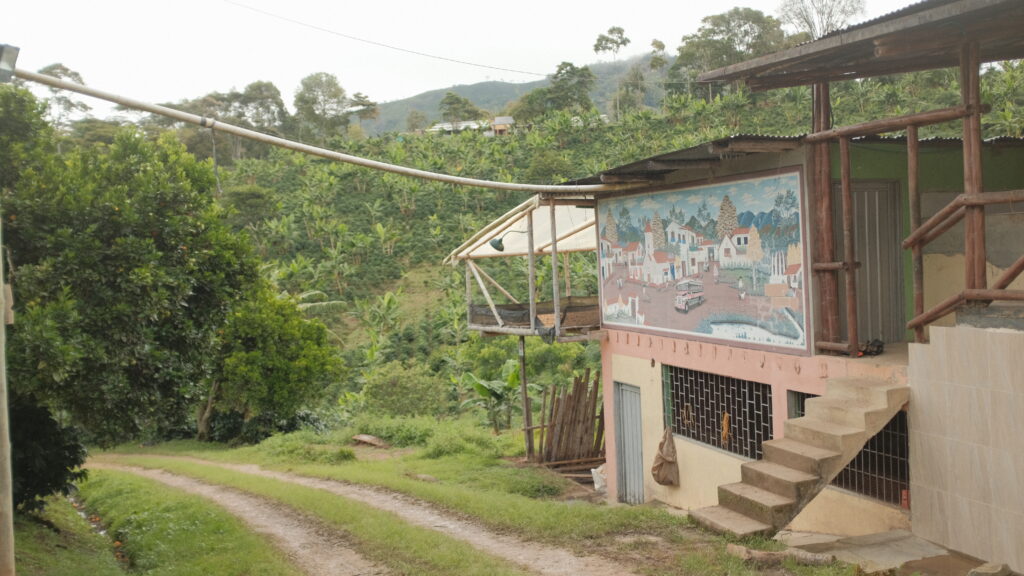
-
An early start the following morning, and we meet with ASORCAFE in Inzá, Cauca. The headquarters were situated in a small town filled with colorful buildings, nestled within towering green mountains and blue skies. It is cool here, the sun delicate, clouds looming. The organization was started in 2003, acting as a collector for producers, buying only parchment to sell to importers and roasters throughout the world. They currently work with 254 producers, roughly 3% women, who own, on average, 1.5 hectares of land. We cup some coffees from producers associated with ASORCAFE, and head out to visit the farm of Rivier Quintero, a member of the group.
-
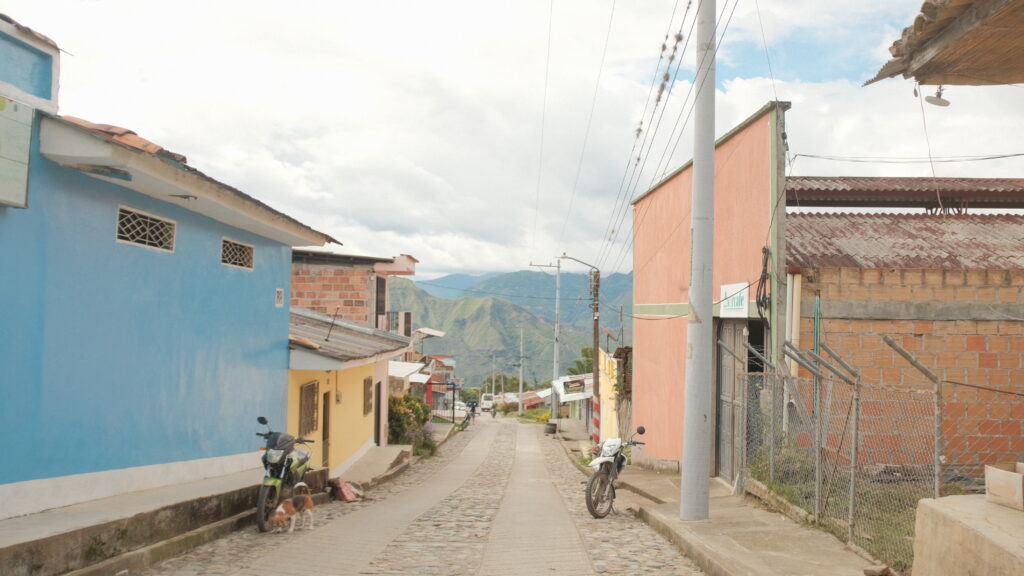
-
Upon arrival, we learn that his farm was only purchased last year and is 6 hectares in size, growing Colombia, Caturra, and Yellow Bourbon. He lives in San Antonio and drives out to his farm to manage the land and continue building his wet mill, drying patios, and his future home. We were situated 1,800 meters above sea level, almost at the same height as the nearby mountains, birds soaring and chirping above. Rivier shows us his newly constructed wet mill, teaches us how he washes his coffee, then guides us down and through his land to see a beautiful vista. It is here where we chat, reflect, and where I continue to gather more thoughts and understanding towards the complexities of Colombian coffee.
-
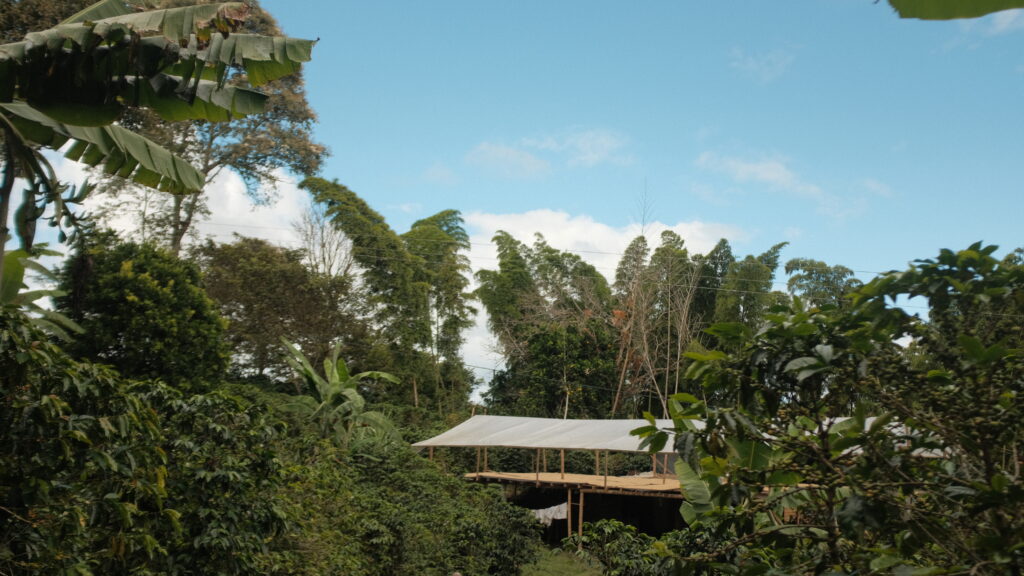
-
In the evening, we drive to Popayan, or the White City, in the department of Cauca, to rest and recharge for another full day. In the morning, we head to Finca El Paraíso, an innovative farm, mill, and lab. A tour ensues where we see how coffee is experimented with to alter its flavor profile. It was quite an extensive tour, and talk, and we saw state-of-the-art dryers using less energy compared to common guardiolas. The team here had hopes to potentially disperse these dryers to producers throughout Colombia. Following the tour, we had an interesting tasting of some truly unique coffee. I was unsure how to feel about this coffee, so unlike any coffee I had experienced and tasted almost of pure rose, or cinnamon. It confused my pallet but gave me an interesting perspective on the science behind coffee.
-

-
After our adventure with science coffee, we traveled to Piendamo to visit with two producers. Our first stop was with Arcesio Sarria at his farm, Carrizal (bamboo). He inherited his massive 30-hectare farm from his father in 1976, growing Castillo and Caturra. We toured the processing facilities, where his coffee is pulped, fermented, and then dried on patios. He also mentions that thanks to the help of SMS (ECOM’s Sustainable Management Services) technicians, he has been able to improve his production, income, whilst being more environmentally conscious. The air was cool, dark clouds loomed in the distance, and we soon walked back to the car, passing bright orange corn drying on the patio.
-
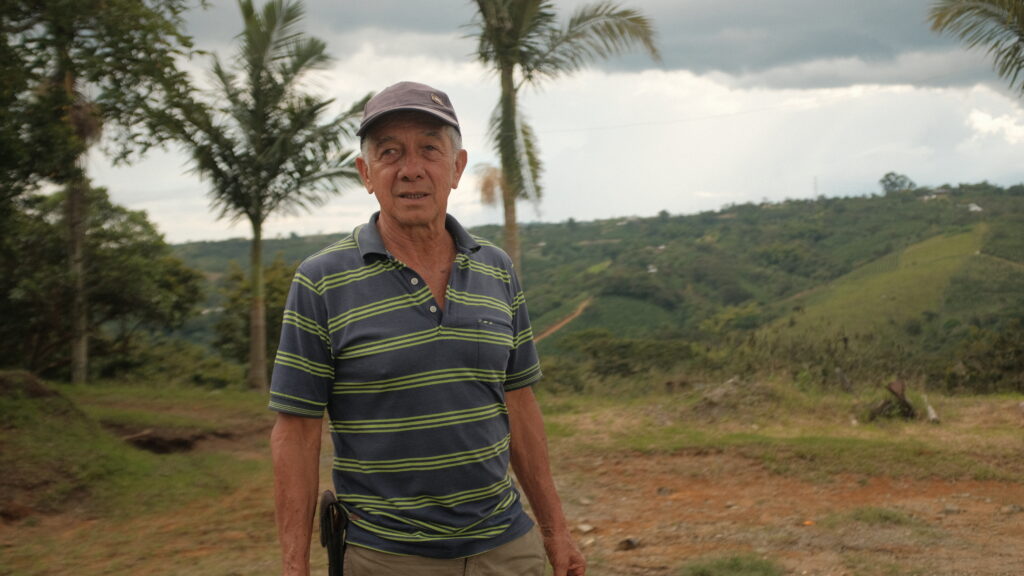
-
Rapidly, we travelled just down the road to meet with Ariel Cordoba, a farmer and inventor, we learn. His farm, Finca Villa Esmeralda, is 16 hectares. He also inherited the farm from his father, growing Castillo, and Colombia. Yields have been low this year due to the weather, about 20-25%, but he is hopeful for next year. Thunder and lighting flash and crash in the distance, but it is so beautiful, wandering around this farm, laughing, and learning.
We then see his processing facilities, a number of Ariel’s inventions, including an impressive tractor that is able to grow in height. He also mentions how beneficial it has been having SMS visit his farm, the technicians teaching and helping him improve in a number of ways. We watch Saffron Finches and Southern Lapwings flutter and chirp in the sky, the clouds dark, thunder loud, lightning bright.
-
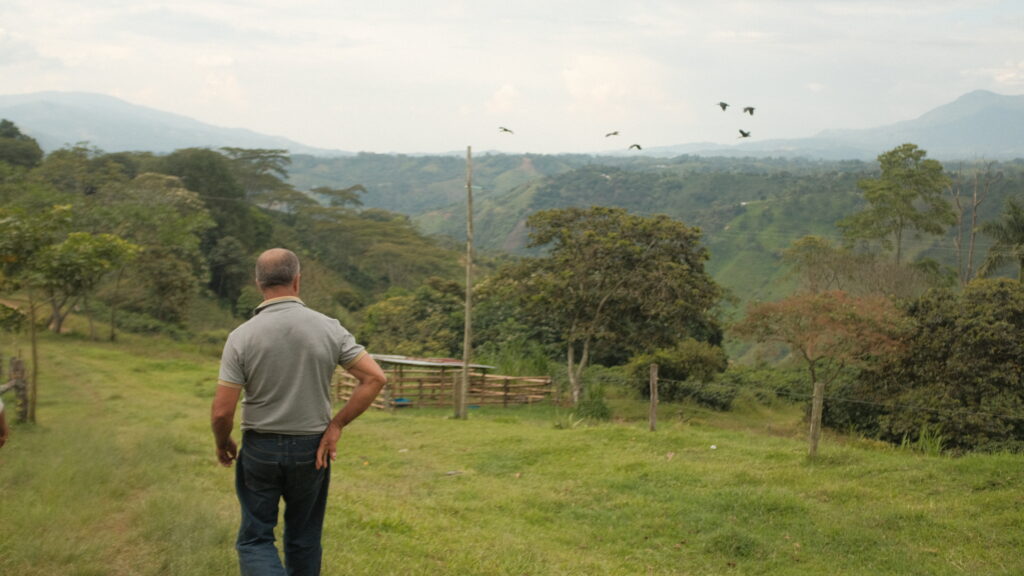
-
A special moment during the trip was the following morning, when we had the amazing opportunity to tour the chocolate factory of Cacao Hunters, a Colombian chocolate company. It was such an enriching, tasty, and educational experience. Learning about chocolate, in my opinion, is essential for people involved in coffee. The two commodities have many similarities and could be grown together. Chocolate quality is improving and could gain similar prominence as specialty coffee.
The tour continued as we ventured to meet Edgar Morena and explore his Edgaritos Farm. This was an extensive 21-hectare farm, filled with a multitude of varietals for experimenting and for foreign clients. Edgar spent 37 years as the National Federation of Coffee Growers of Colombia’s (FNC) Director of Quality Insurance, which included assessing various varietals, tasting them, and understanding the complex flavor profiles in addition to how they grow. We walked around his farm, saw his experimental garden, then tasted a variety of coffees in his cupping lab that towered over his land. It was quite an interesting experience, something unique for Colombia.
-
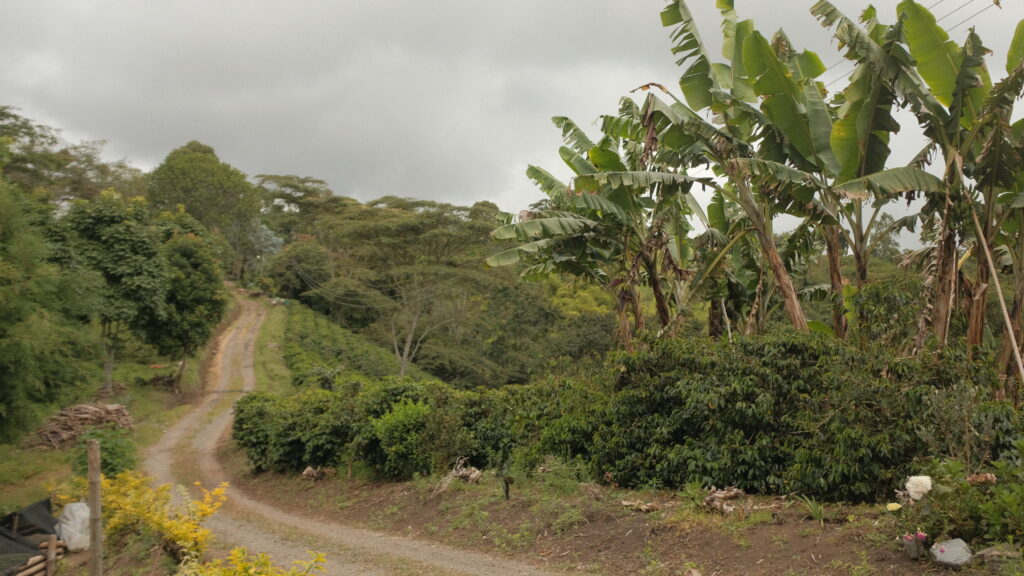
-
Afterwards, we traveled to visit the FNC Cauca headquarters, where we were warmly welcomed by the FNC team. We listened to an intriguing presentation about the future goals of the FNC and what they hope to accomplish in the coming years. The overall goal for the organization is to promote Colombian coffee for markets throughout the world whilst also creating a future for producers and the communities they live in. I could reflect and think that many producers are beginning to take leadership, aiming to accomplish goals on their own or with the support of private organizations.
The evening concluded with some tasty coffee brewed at the FNC café, and some local food in the evening. The following morning, after a quick tour of the Popayan dry mill, we departed back to Bogotá, to rest and say goodbye.
-
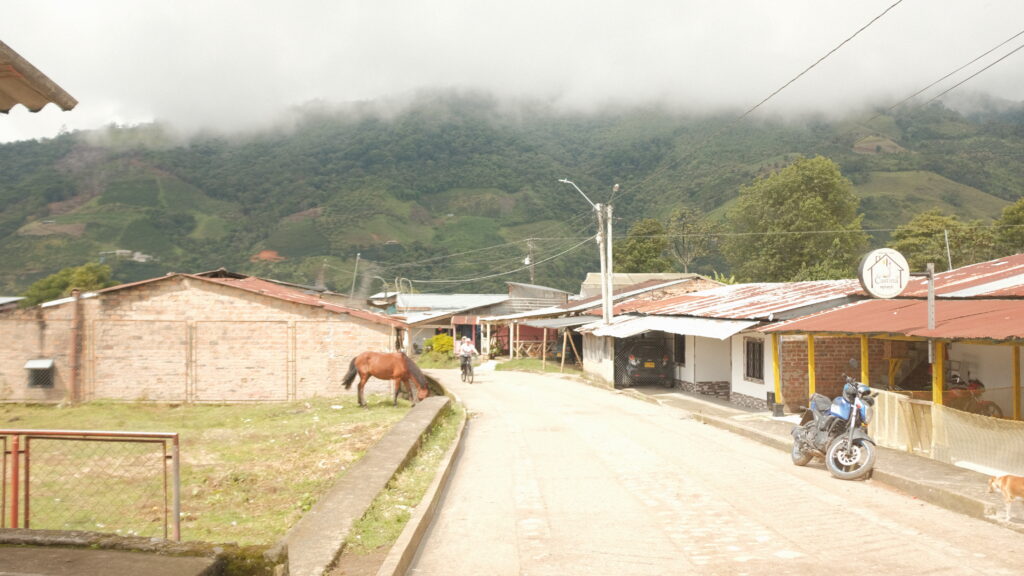
-
Such an adventurous trip, filled with many areas of Colombia, coffee farms, tastings, meeting with producers, and learning. Overall, I realized how resilient and strong the producers of Colombia are. They have the ability to grow and change, improving quality, and battling the changing climate. They are hopeful, passionate, and eager to innovate. The future of Colombia will reveal if producers need large organizations to function, or if external groups can come in and help support producers in new and modern ways.